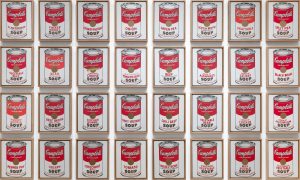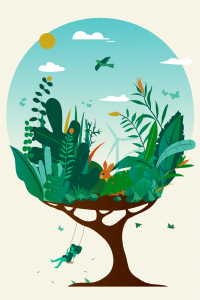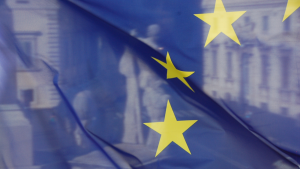A look at CC’s Open Culture Roundtable in Lisbon
lundi 22 mai 2023 à 13:00
As part of our Open Culture Program, we at Creative Commons (CC) are exploring avenues to build momentum towards a UNESCO Recommendation on Open Culture. On 11 May, 2023, we hosted our first in-person Open Culture event, in Lisbon, Portugal. In this blog post, we look back at the day’s highlights and map out next steps.
Background
Over the past decade, the open movement has made incredible strides in the cultural sector — take a look at some of the pioneers — yet it is still facing major barriers and challenges. But challenges are opportunities in disguise. In September last year, UNESCO declared culture a global public good at Mondiacult 2022. With the successes of the 2019 UNESCO Recommendation on Open Educational Resources and 2021 Recommendation on Open Science, the world looks to UNESCO’s leadership to create the necessary international framework that would unlock the possibilities of equitable, ethical, and respectful sharing of cultural heritage in the digital age: a UNESCO Recommendation on Open Culture. For an explanation of useful terms related to open culture, take a look at the glossary developed by the CC open culture platform.
Meeting highlights
Recognizing that such an international instrument requires deliberative, inclusive community consultations, the in-person event focused on the foundational work of gathering community input. Structured around a co-created agenda and under the able guidance of Abdul Dube and Mona Ebdrup, facilitators at Visual Confidence, just under 40 experts gathered to exchange views and open initial discussions on the need to realize open culture as a global public good.
Participants came from far and wide across the open movement and beyond, spanning the fields of law, library science, policy, design, anthropology, history, museum curation, international organizations, and many others. Attending from CC’s team were Brigitte Vézina, Director of Policy and Open Culture; Connor Benedict, Open Culture Coordinator; Jennryn Wetzler, Director of Learning and Training; and Jocelyn Miyara, Open Culture Manager.
During convivial, engaged, polyphonous and cross-pollinating conversations, we exchanged our diverse perspectives; explored potential common grounds on backgrounds and contexts, core issues, and key principles; built a common understanding of what we collectively want to achieve; and elaborated a skeleton of a shared vision for “open culture.” Issues discussed included the role of copyright over access to cultural heritage, the impact of artificial intelligence, the “platformization” of culture, a sense of a generational shift in the open movement, the need to account for ethical sharing, the economics of open culture, open beyond “GLAMs” (galleries, libraries, archives and museums), the need for diversity and inclusivity in global and local contexts (including traditional knowledge and Indigenous rights), a vision for open culture in 100 years, and a lot more!
Take a look at the meeting’s graphic record, offering a visual summary of the diverse perspectives that felt most resonant within our breakout groups and that surfaced in plenary debriefs.
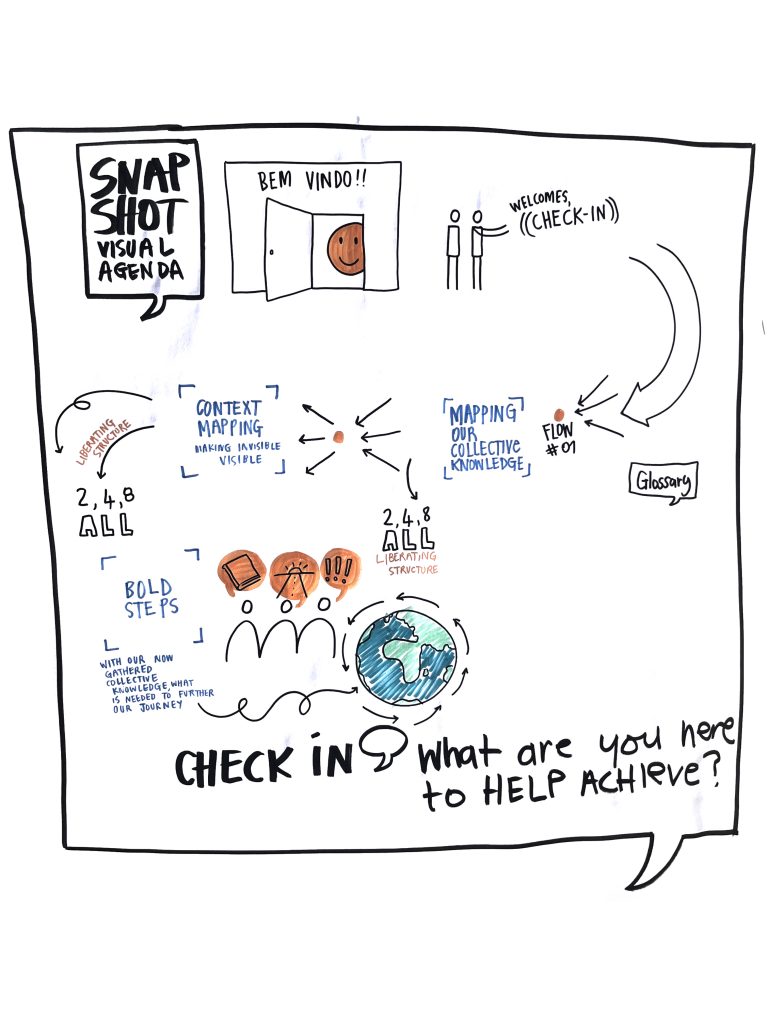
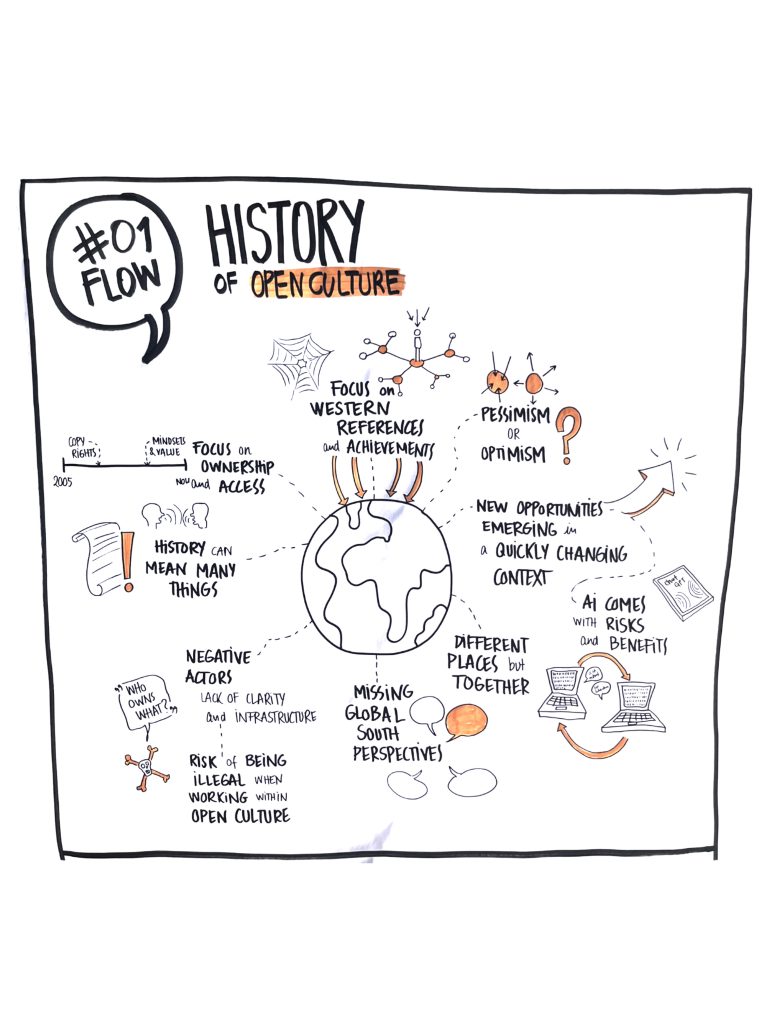
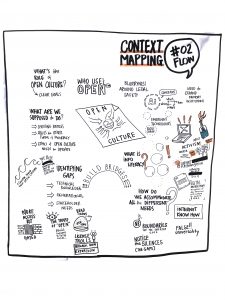
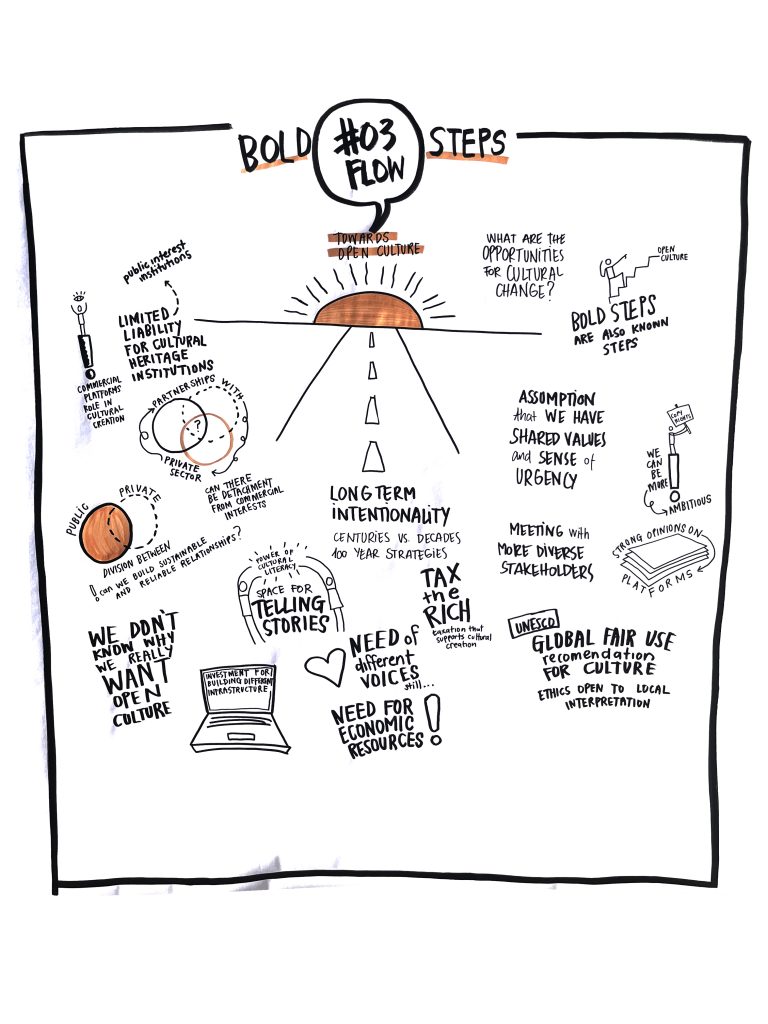
Participants appreciated the opportunity to meet peers and build new relationships, and got a sense of the possibilities of going down a common path together. While in-person meetings such as this cannot include all of the perspectives needed, participants noted the value of in-person discussions to probe various approaches to open culture deeply. We aim to offer additional avenues to include more perspectives in follow-up activities.
Here’s what some of the participants shared about their experience:
“The CC Open Culture Roundtable was an opportunity to meet and engage with open culture experts and advocates around the world and see how, despite the many contextual differences, there are meaningful ways for us to collaborate and shape nuanced, context-mindful perspectives for projects and policies aiming at a shared and open culture.”
— Mariana Valente, Assistant Professor in law, University of St. Gallen, Switzerland and Associate Director, InternetLab (Brazil).
“It was a great opportunity to hold first discussions about the initiative, and it allowed me to reflect on possible options further.”
— Gašper Hrastelj, Secretary General, Slovenian National Commission for UNESCO
“The CC Open Culture Roundtable was a perfect opportunity to meet in person to discuss Open Culture, and it allowed me to enlarge my view and learn other perspectives.”
— Deborah de Angelis, Chapter Lead, Creative Commons Italy
“The CC Open Culture Roundtable was a great opportunity to meet people from diverse organizations and parts of the world, and it allowed me to see different perspectives on IP and ‘openness’ as a concept and movement.”
— Matt Voigts, Copyright and Open Access Policy Officer, IFLA
“It was an excellent opportunity to bring different open culture stakeholders together and reignite and expand important discussions among them. And it allowed me to reflect on the possibilities in my reach to contribute more effectively to the progress of open culture, both locally and globally.”
— Fátima São Simão, Chapter Lead, Creative Commons Portugal
“It was an inspiring opportunity to share ideas of the open culture and notice that there are a lot of people trying to solve similar questions from different angles, and it allowed me to meet many new and interesting people and to enjoy working together.”
— Johanna Lilja, Director of Services, National Library of Finland, and IFLA Cultural Heritage Advisory Board
“For me, it was an opportunity to do a historical reflection exercise where we were able to look at how we have grown as a movement. And it allowed me to collaborate in the construction of a more or less common concept or idea of what is understood in different corners of the world as “open culture”. It also allowed me to connect with people who are doing amazing projects.”
— Ivan Martinez, Coordinator, Creative Commons Mexico
“The CC Open Culture Roundtable was a first step on a exploratory journey on how GLAMs could be better supported through open approaches to public domain material. It allowed me to understand the diversity of stakeholders’ perspectives on the issue.”
— Lutz Möller, Deputy Secretary-General, German National Commission for UNESCO
“The CC Open Culture Roundtable was a pitstop for ongoing discussions around the importance of open culture, and it allowed me to reconnect to the wider international community.”
— Maarten Zeinstra, Owner, IP Squared and Member, Creative Commons Netherlands
“It was firstly a chance to meet people who are actively involved in the movement, particularly from different contexts, it allowed me to better see somewhat paradoxically the boundaries of open culture, and have the space to start to think about what openness means for knowledges outside of the legal frameworks of IP.”
— Abira Hussein, Advisor, Whose (Digital) Archives? and Lab Partner, GLAM-E Lab
“The CC Open Culture Roundtable was a warm gathering of fellow travelers and it allowed us to imagine new ways to act together.”
— Fiona Romeo, Senior Manager, Culture and Heritage, Wikimedia Foundation
Next steps
We are excited to take the outcomes of our Lisbon event forward. We are already planning to continue the conversation at the CC Summit in Mexico in October, and hopefully at GLAM Wiki 2023 in Montevideo, Uruguay in November this year. We will also organize multiple virtual opportunities to contribute as we engage more community members in our work on open culture.
Interested in knowing more about CC’s work in the field of open culture? Join our open culture platform or write to us at info@creativecommons.org.
The post A look at CC’s Open Culture Roundtable in Lisbon appeared first on Creative Commons.

